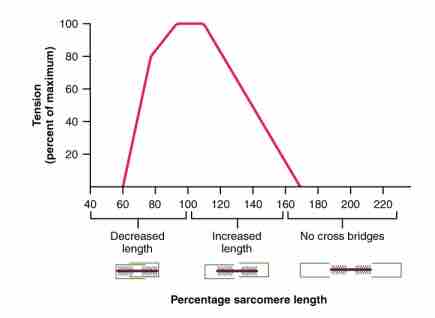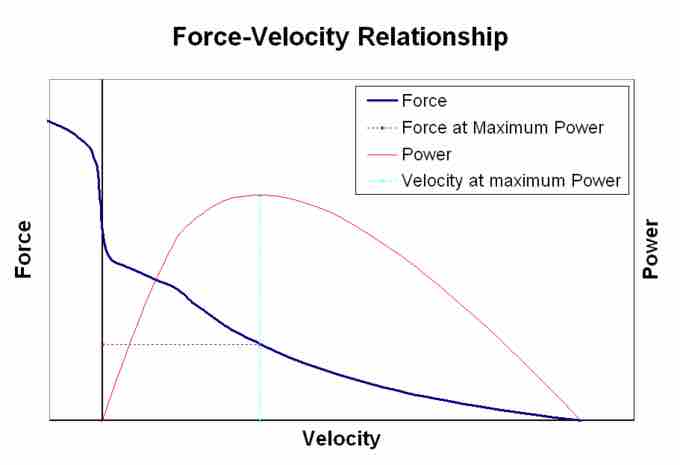Muscle Force Generation
The force a muscle generates is dependent on the length of the muscle and its shortening velocity. These two fundamental properties limit many key biomechanical properties, including running speed, strength, and jumping distance.
Force-Length Relationship
Due to the presence of titin, muscles are innately elastic. Skeletal muscles are attached to bones via tendons that maintain the muscle under a constant level of stretch called the resting length. If this attachment was removed, for example if the bicep was detached from the scapula or radius, the muscle would shorten in length.
Muscles exist in this state to optimize the force produced during contraction, which is modulated by the interlaced myofilaments of the sarcomere. When a sarcomere contracts, myosin heads attach to actin to form cross-bridges. Then, the thin filaments slide over the thick filaments as the heads pull the actin. This results in sarcomere shortening, creating the tension of the muscle contraction. If a sarcomere is stretched too far, there will be insufficient overlap of the myofilaments and the less force will be produced. If the muscle is over-contracted, the potential for further contraction is reduced, which in turn reduces the amount of force produced.
Simply put, the tension generated in skeletal muscle is a function of the magnitude of overlap between actin and myosin myofilaments.

The Ideal Length of a Sarcomere
Sarcomeres produce maximal tension when thick and thin filaments overlap between about 80 percent to 120 percent, approximately 1.6 to 2.6 micrometers.
In mammals, there is a strong overlap between the optimum and actual resting length of sarcomeres.
Force-Velocity Relationship
The force-velocity relationship in muscle relates the speed at which a muscle changes length with the force of this contraction and the resultant power output (force x velocity = power). The force generated by a muscle depends on the number of actin and myosin cross-bridges formed; a larger number of cross-bridges results in a larger amount of force. However, cross-bridge formation is not immediate, so if myofilaments slide over each other at a faster rate the ability to form cross bridges and resultant force are both reduced.
At maximum velocity no cross-bridges can form, so no force is generated, resulting in the production of zero power (right edge of graph). The reverse is true for stretching of muscle. Although the force of the muscle is increased, there is no velocity of contraction and zero power is generated (left edge of graph). Maximum power is generated at approximately one-third of maximum shortening velocity.

Force-Velocity Relationship
As velocity increases force and therefore power produced is reduced. Although force increases due to stretching with no velocity, zero power is produced. Maximum power is generated at one-third of maximum shortening velocity.